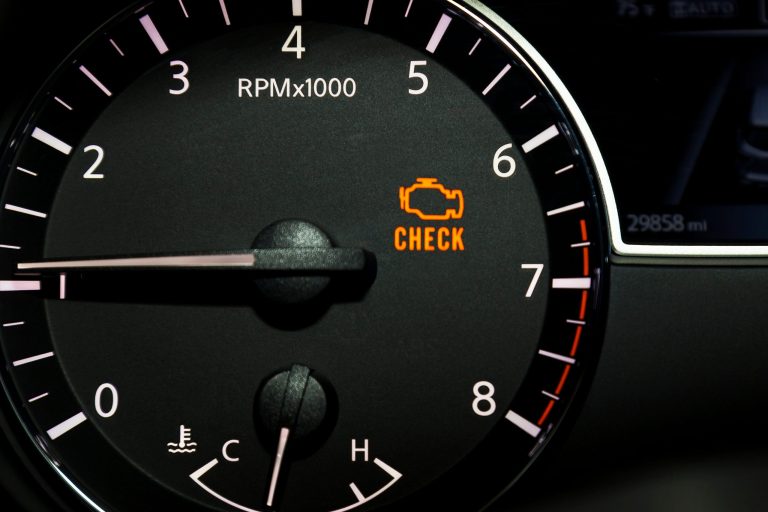How can I determine the details of my car warranty?
Understanding the details of your car warranty is essential for every vehicle owner. It provides peace of mind and protects you from unexpected repair costs. Let’s check out the various aspects of car warranties, including how to determine warranty details, the coverage period, components covered, exclusions and limitations, and the option of extended warranties.

Looking up Factory Car Warranty by the VIN
One of the easiest ways to determine the details of your car warranty is by looking up the factory warranty using your Vehicle Identification Number (VIN). The VIN number identifies your vehicle and is unique, and can be found on your vehicle registration, insurance documents, or the driver’s side dashboard. By accessing the manufacturer’s website or contacting their customer service, you can obtain information about the specific warranty coverage for your vehicle. There are also third-party websites that can help decode the VIN number for your vehicle.
Contacting the Dealership about your Car Warranty
If you have questions about your car warranty or need specific information, reaching out to the car dealership where you purchased the vehicle is an excellent option. The dealership’s service department can provide you with detailed information about your warranty, including coverage, terms, and any additional warranties that may be applicable to your vehicle.
Warranty for a New Car and Used Car
It’s important to understand that vehicle warranties differ between new and used cars. New car warranties are typically provided by the manufacturer and cover car defects and repairs for a specific period or mileage, whichever comes first. Used cars, on the other hand, may have a remaining portion of the original new car warranty or a separate warranty offered by the dealership or a third-party provider. It’s crucial to clarify the warranty coverage when purchasing a used car to avoid any misunderstandings.
Components Covered under Car Warranty
Car warranties typically cover various components of the vehicle. While the specific coverage can vary between manufacturers and warranty types, common components often covered include the engine, transmission, drivetrain, electrical systems, heating and cooling systems, and emissions components. Understanding the components covered under your warranty helps you anticipate potential repair expenses and make informed decisions.
Coverage Period for Car Warranty
The typical car manufacturer’s warranty period consists of two main components: the powertrain warranty and the bumper-to-bumper warranty. The powertrain warranty covers the major mechanical components that enable a vehicle to move, such as the engine, transmission, and drivetrain. This warranty often lasts longer than the bumper-to-bumper warranty and typically ranges from 5 to 10 years or a specific mileage limit (e.g. 60,000), whichever comes first. On the other hand, the bumper-to-bumper warranty, also known as the basic warranty, covers almost all parts of the vehicle, including electrical systems, heating and cooling components, and interior features. This warranty usually spans a shorter duration in comparison to a powertrain warranty, typically around 3 to 5 years or a specific mileage limit (e.g. 36,000). It’s important to note that warranty periods can vary among car manufacturers and models, so it’s always advisable to review the specific terms and conditions outlined by the manufacturer for accurate information regarding warranty coverage.
Bumper to bumper warranty (Basic Warranty)
Unlike a powertrain warranty, which focuses on the major mechanical components responsible for vehicle propulsion (such as the engine and transmission), a bumper-to-bumper warranty extends its coverage to a wide range of parts and systems. This can include electrical systems, heating and cooling components, audio systems, infotainment systems, suspension, brakes, and more. Essentially, it covers most parts of the vehicle except for wear-and-tear items and specific exclusions mentioned in the warranty terms.
The specific coverage and limitations of a bumper-to-bumper warranty can vary among car manufacturers and models. It’s important to carefully read the warranty documentation provided by the manufacturer to understand what is covered, any applicable deductibles, and any specific maintenance requirements to maintain the warranty’s validity.
It’s worth noting that while a bumper-to-bumper warranty provides comprehensive coverage, it may not cover damages resulting from accidents, misuse, or lack of proper maintenance. Additionally, certain components may have their own separate warranty periods, such as corrosion warranties or emissions warranties.
In summary, a bumper-to-bumper warranty offers broad coverage for various components and systems of a vehicle, providing peace of mind to the owner against defects and malfunctions within a specified time or mileage limit.
Powertrain Warranty
The powertrain warranty is a crucial aspect of car warranties. It typically covers the engine, transmission, and drivetrain components, which are vital for the vehicle’s operation. Powertrain warranties often have longer coverage periods compared to other parts of the vehicle. Understanding the details and limitations of your powertrain warranty helps you assess potential repair costs and make informed decisions regarding maintenance and repairs.
Exclusions and Limitations
Car warranties may have exclusions and limitations that you need to be aware of. These exclusions typically include regular wear and tear, maintenance items (such as brakes and tires), modifications made to the vehicle, and damage resulting from accidents or misuse. Understanding these exclusions and limitations helps manage expectations and ensures that you comply with the warranty terms.
Does My Car Have an Extended Warranty?
In some cases, vehicles may come with an extended warranty on top of the OEM factory warranty. Extended warranties provide coverage beyond the original warranty period and can be obtained through the manufacturer or third-party providers. To determine if your car has an extended warranty, you can refer to your warranty documentation, contact the dealership, or reach out to the manufacturer’s customer service. They can provide you with information regarding any extended warranty coverage that may be applicable to your vehicle.

Can I Purchase an Extended Warranty?
If your car doesn’t have an extended warranty but you’re interested in obtaining one, you have options available. Vehicle extended warranties can be purchased straight from the manufacturer, dealership, or third-party providers specializing in warranty services. Before making a decision, it’s important to carefully review the terms and conditions, coverage details, exclusions, and limitations of the extended warranty. Compare different extended car warranty providers and consider factors such as reputation, customer reviews, and the cost of the extended warranty. Consulting with an automotive expert or warranty specialist can also provide valuable insights to help you make an informed decision.
Understanding the details of your car warranty is crucial for every vehicle owner. By utilizing methods such as looking up the factory warranty using your VIN and contacting the dealership, you can determine the specifics of your warranty coverage. Recognizing the components covered, coverage period, powertrain warranty details, exclusions, and limitations helps manage expectations and plan for potential repairs or maintenance. Additionally, exploring the possibility of an extended warranty provides an opportunity to extend coverage beyond the original warranty period. Remember to research and evaluate different options before purchasing an extended warranty, ensuring it aligns with your needs and provides the desired level of coverage. With a comprehensive understanding of your car warranty, you can confidently navigate the world of automotive repairs and protect yourself from unexpected expenses.
DISCLAIMER: The information provided in this article is not to be construed as legal advice. Readers should be aware that no Attorney-Client relationship or privilege is established by posting or reading this content. Moreover, this article is not intended to solicit business. For personalized legal guidance, it is advised to consult with a qualified attorney.









